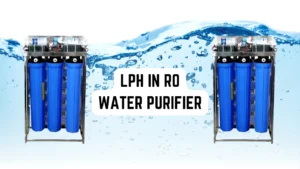Water and wastewater treatment is an important part of modern infrastructure, especially in modern cities, industries, and large residential setups. If you’re researching sewage treatment plants (STPs), effluent treatment plants (ETPs), or water recycling systems, you’ve likely come across terms like KLD and MLD. But what do they actually mean?
In this blog by Guestpost.co.in, we’ll break down these technical units—KLD and MLD—in simple terms, explain how they’re used in water treatment planning, and cover related search terms like kld full form, kld full form in STP, 1 KLD means, 100 KLD means, and how to convert MLD to KLD.
What is KLD in Water Treatment?
- KLD stands for Kilolitres per Day.
- Kilo = 1,000
- 1 KLD = 1,000 litres of water per day
- This unit is used to define the capacity of a water or wastewater treatment system—specifically, how much water it can process in one day.
KLD Full Form in STP:
In the context of an STP (Sewage Treatment Plant), KLD refers to the daily volume of sewage or wastewater the plant is designed to treat. For example: A 50 KLD STP can treat 50,000 litres of sewage per day; A 100 KLD STP is designed for 100,000 litres or 100 kilolitres daily.
What is MLD in Water and Wastewater Treatment?
MLD stands for Million Litres per Day. 1 MLD is 1,000,000 litres per day. Used mostly for large-scale municipal or industrial projects. For example: A city STP may have a capacity of 5 MLD, meaning it can treat 5 million litres of sewage daily.
How to Convert MLD to KLD?
Converting MLD to KLD is simple:
1 MLD = 1,000 KLD
So:
0.5 MLD = 500 KLD
2 MLD = 2,000 KLD
10 MLD = 10,000 KLD
This conversion is important when you’re comparing treatment systems across different scales or reading reports that use different units.
Applications of KLD & MLD
| Sector | Typical Range |
|---|---|
| Small Homes | 1–2 KLD |
| Apartments | 10–100 KLD |
| Colleges/Schools | 20–200 KLD |
| Commercial Buildings | 50–500 KLD |
| Townships/Malls | 500–2000 KLD |
| Cities/Municipal | 1–100+ MLD |
| Industrial Plants | 1 MLD – 100 MLD |
Why KLD and MLD Are Important in Water Treatment?
- System Sizing – Choosing the right KLD or MLD rating ensures the treatment plant is neither overbuilt (wasting money) nor underbuilt (leading to inefficiency and pollution).
- Regulatory Compliance – Environmental agencies in India (like CPCB and SPCBs) mandate STPs or ETPs of a specific capacity based on the water consumption or sewage generation.
- Planning for Future Growth – By calculating current demand in KLD or MLD, engineers and planners can forecast the required capacity for future expansion.
Common KLD/MLD Terms
| Term | Meaning |
|---|---|
| KLD Full Form | Kilolitres per Day |
| 1 KLD Means | 1,000 litres/day |
| 100 KLD Means | 100,000 litres/day |
| KLD in STP | Sewage treated in kilolitres per day |
| MLD to KLD | 1 MLD = 1,000 KLD |
Conclusion
Understanding KLD and MLD is vital when designing or evaluating water and wastewater treatment systems. These units help determine the right capacity, regulatory compliance, and operational efficiency for residential, commercial, and industrial setups. Whether you’re managing a housing society, planning a hospital STP, or working on a municipal wastewater project, always assess your daily water needs in terms of KLD or MLD to select the right solution.
At Guestpost.co.in, we strive to simplify technical topics to help decision-makers, engineers, and eco-conscious citizens make informed choices.
Frequently Asked Questions
Q1: What is the KLD full form in STP?
A: KLD stands for Kilolitres per Day. In STP, it defines how much sewage the plant can treat each day.
Q2: What does 1 KLD mean?
A: 1 KLD means the capacity to treat or supply 1,000 litres of water per day.
Q3: How much is 100 KLD?
A: 100 KLD equals 100,000 litres/day—suitable for medium-scale operations.
Q4: How do I convert MLD to KLD?
A: Multiply MLD by 1,000. For example, 2 MLD = 2,000 KLD.
Q5: Is KLD used only for sewage?
A: No. KLD is used in both water supply and wastewater treatment systems.




